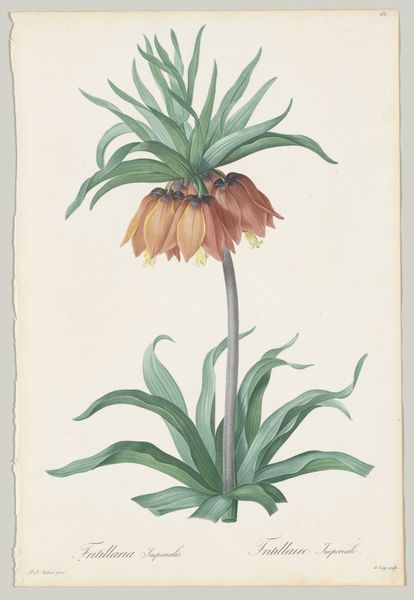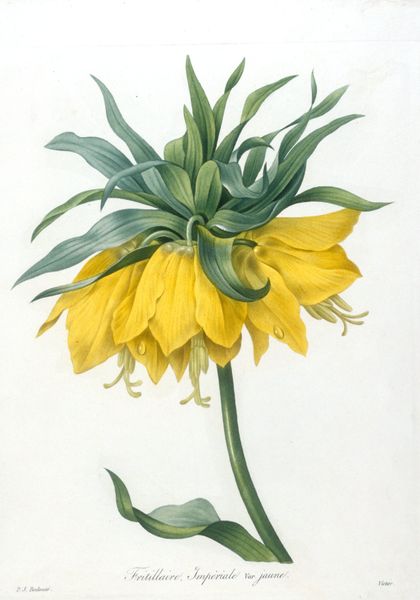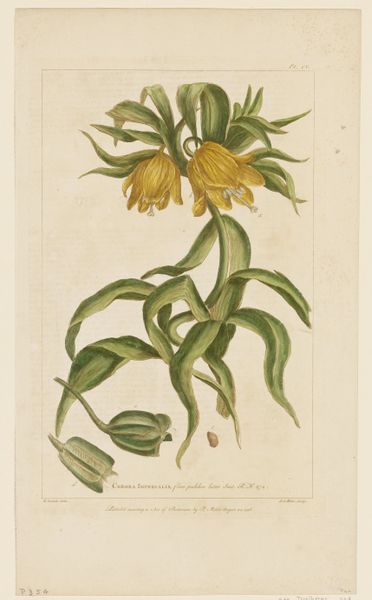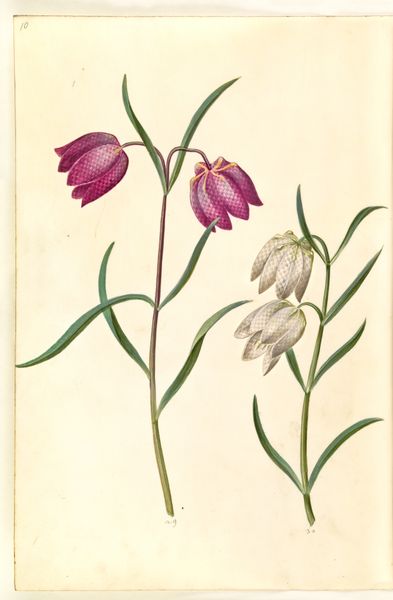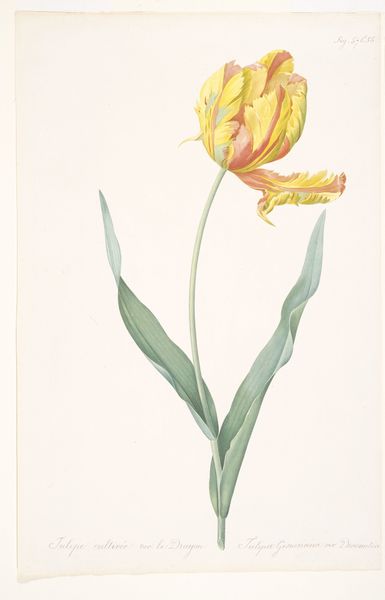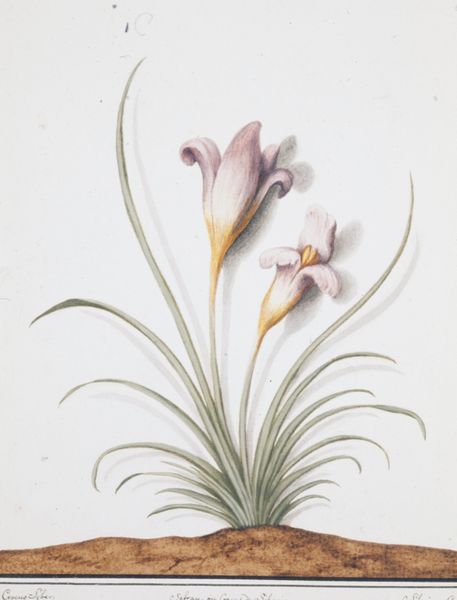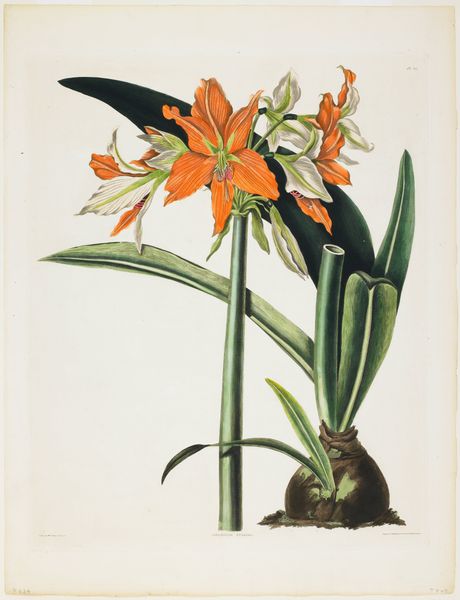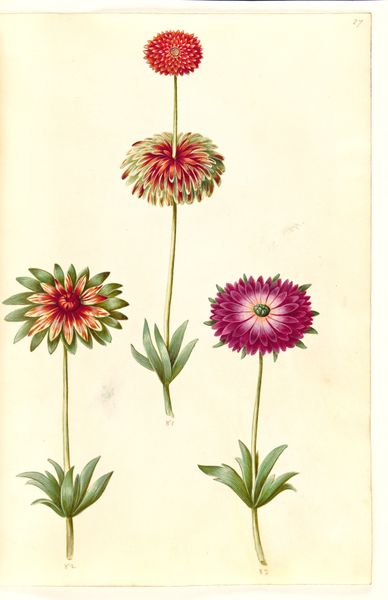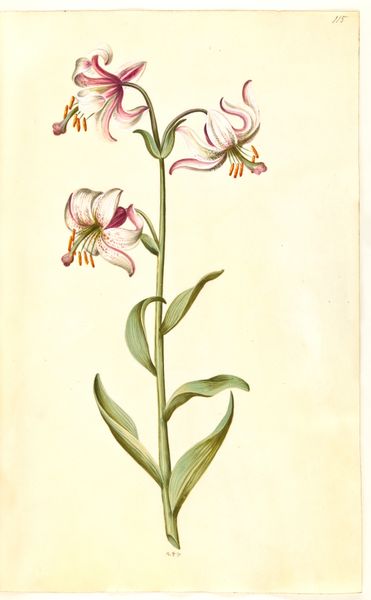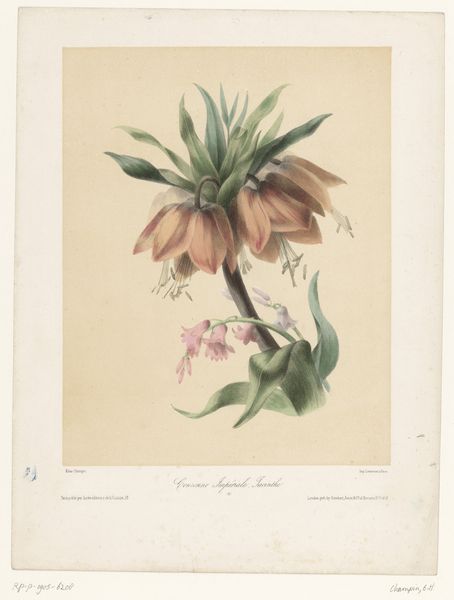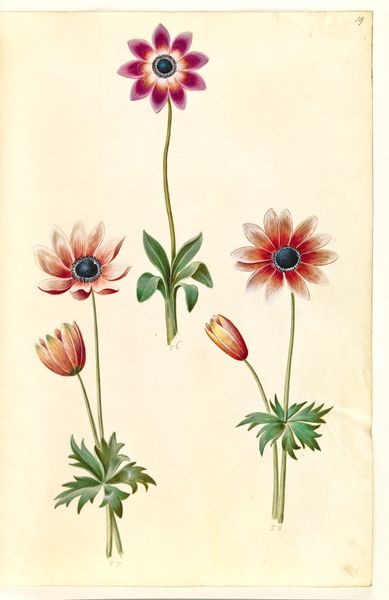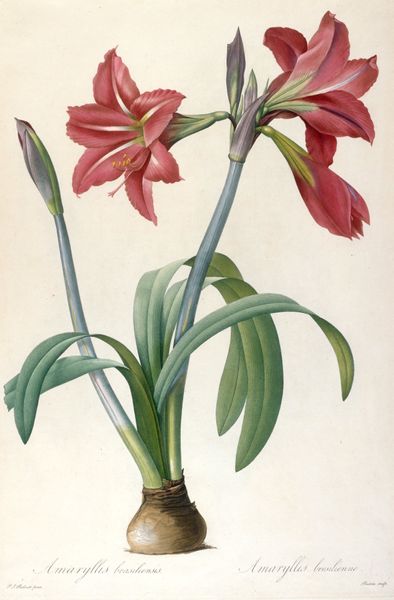
print, watercolor
#
neoclacissism
# print
#
oil painting
#
watercolor
#
watercolour illustration
#
watercolor
Dimensions: 10 1/2 x 8 1/4 in. (26.67 x 20.96 cm) (plate)
Copyright: Public Domain
Editor: Here we have Pierre Joseph Redouté's "Fritillaire Imperiale," from 1827. It appears to be a print, and perhaps also some watercolor? It's quite striking—the composition is so formal and precise. What do you see in this piece, focusing on its visual elements? Curator: I'm drawn to the structure. Observe the radial symmetry; the leaves at the top forming a kind of crown. Note, too, the deliberate gradation of colour, moving from the blues and greens through to the oranges. How would you describe the way Redouté uses line in the petals? Editor: I notice the lines are very delicate, almost like he's trying to capture the texture of the flower. They create a sense of depth. Are you suggesting the visual forms evoke something beyond the image of a flower? Curator: Precisely. Think about how the controlled, almost mathematical, arrangement plays against the natural, organic form of the plant. This tension animates the image, elevates it from simple representation towards a constructed ideal. Do you see that? Editor: I do now. The precision is key. Without it, the flower might appear ordinary, but the tight rendering transforms it into something… more. It's an exercise in idealized form. Curator: And in that tension we find the artwork’s success, I think. Editor: Absolutely. I came in seeing a pretty flower, but now I notice a dialogue between structure and nature, ideal and reality. Thanks for the insight.
Comments
No comments
Be the first to comment and join the conversation on the ultimate creative platform.
